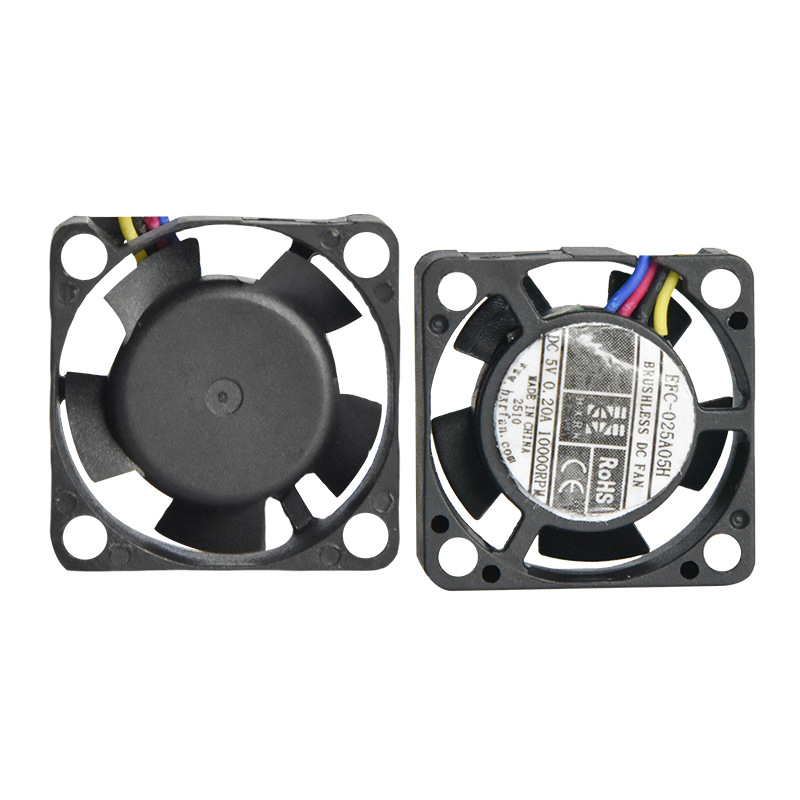Care and maintenance of CPU fans can start from the following aspects:
**I. Daily Cleaning**
1. External Cleaning
- Periodically, gently wipe the CPU fan's casing and heatsink with a soft-bristled brush or a clean, damp cloth. This removes dust, dirt, and other debris, preventing them from accumulating on the fan and affecting the cooling effect. Be careful not to use a cloth that is too wet, as moisture can get inside the fan and cause damage.
- For stubborn stains, you can use specialised electronic equipment cleaners, but make sure you use them in a well-ventilated environment and follow the instructions properly.
2. Internal cleaning
- If possible, open the computer case and clean the inside of the CPU fan. Use a can of compressed air or a small hoover to clean the dust between the fan blades and the heatsink. A compressed air canister blows a strong stream of air to remove dust from hard-to-reach places, while a small hoover sucks up the dust and prevents it from flying.
- When cleaning the interior, proceed with care and avoid touching other computer parts that could cause damage. At the same time, make sure that the computer has been powered off and wait for some time after cleaning to let the residual moisture or cleaner evaporate before restarting the computer.
**II. Proper Use**
1. Avoid overuse
- Avoid using the computer continuously for a long period of time and allow the computer to have proper rest time. Excessive use of the computer will cause the CPU temperature to rise, increasing the burden on the CPU fan and shortening its life. You can reasonably arrange your computer's usage time according to your own usage situation, and let your computer take a break every once in a while to reduce the CPU temperature.
2. Control the environment temperature
- Keep the environment where the computer is located at a suitable temperature. High ambient temperatures make it difficult for the CPU fan to dissipate heat effectively, thus affecting the performance and stability of the computer. Try to place the computer in a well-ventilated place with moderate temperature, avoiding direct sunlight and close to heat sources. If the ambient temperature is too high, consider using an air conditioner or fan to lower the room temperature.
3. Avoid shocks and bumps
- Be careful to avoid shocks and bumps when moving the computer or performing other operations. Vibration and collision may cause parts of the CPU fan to loosen or become damaged, affecting its normal operation. Try to place the computer on a smooth surface and avoid moving or shaking the computer during use.

**III. Regular Inspection and Maintenance
1. Check fan operation
- Regularly check the operation of the CPU fan, including fan speed, noise and vibration. If you find that the fan speed slows down abnormally, the noise increases, or the vibration is obvious, there may be a problem with the fan, and it needs to be serviced or replaced in time.
- You can use some software tools to monitor the CPU fan speed and temperature in order to detect problems in time. At the same time, you can also observe the performance of the computer, such as lagging, crash, etc., to determine whether the CPU fan is working properly.
2. Replace the fan lubricant
- For some CPU fans that use bearings, you can change the fan lubricant regularly to keep the fan running smoothly. The lubricant can reduce the wear and tear of the bearings, lower the noise, and prolong the service life of the fan. You can refer to the fan's manual for specific replacement methods or under professional guidance.
3. Upgrading or Replacing Fans
- If the CPU fan has been used for a long time, or the performance cannot meet the current demand, you can consider upgrading or replacing the fan. Choosing a CPU fan with better performance and lower noise can improve the cooling effect of your computer, as well as the performance and stability of your computer.
- When replacing a fan, be careful to choose a model and specification that matches your computer's CPU and make sure it is installed correctly. At the same time, you can also consider choosing some fans with intelligent speed control function, so as to automatically adjust the speed of the fan according to the temperature of the CPU, to achieve better heat dissipation and energy saving purposes.